Exploring the intersection of open content, open data, and open learning analytics
Why is this important?
As technology use increases in education, the basic acts of teaching and learning result in the creation of ever-larger amounts of data. These data describe the behaviors of people, from what students did read or did not watch to how long it took an instructor to grade a piece of student work. At the same time, there has been an explosion of learning analytics tools intended to help students and teachers make sense of this deluge of data through machine learning, statistics, and other algorithms. These tools recommend actions that impact students, such as which assignment to complete next, or who should receive extra help.
On one hand, these developments should be embraced for their tremendous potential to provide valuable guidance in support of teaching and learning. On the other hand, these changes also raise serious questions regarding how data and algorithms are designed and managed that can profoundly affect the open education space.
What is the opportunity?
The open education movement must begin to consider the interrelationships between open content, open data, open learning analytics tools, and pedagogy—both the opportunities and the challenges. For example, how can we leverage the power of open in the context of data while still respecting student privacy? We also need to take a strong stance on data ownership—data created by students belongs to students, period. Whether open or proprietary, it is unacceptable for software vendors to claim ownership over data generated by student users. Finally, as we entrust analytics tools with increasingly important decisions related to teaching and learning, their algorithms need to be transparent, accountable, and peer reviewable. How can we leverage the power of open source software methodologies in the context of learning analytics tools? The open education movement needs to grapple with these and related issues.
Working through these questions will help us more fully understand the potential improvements to pedagogy (and, consequently, learning) that can result from creatively combining open content, open data, and open learning analytics tools.
How can you get involved?
- Creators and purchasers of technology should follow best practices for data and analytics. Students should own the data they create, and be able to access it. Analytics, algorithms, and implementations should be transparent and peer reviewable.
- Be conscious about how your institution handles student data, particularly in the context of the learning management system (LMS). Ask students, IT staff, and administrators if students at your institution have access to their data. Important questions to ask surround students being able to download a copy, and whether they are free to openly license a work if they choose.
- Be conscious of learning analytics software that uses “black box” algorithms that make decisions according to secret rules that are not peer reviewable or verifiable. Acknowledge the problems inherent in introducing these to the teaching and learning process.
- Talk to students about the potential benefits of opening their learning data and the potential privacy pitfalls that opening their learning data might entail. What creative solutions can you find together?
